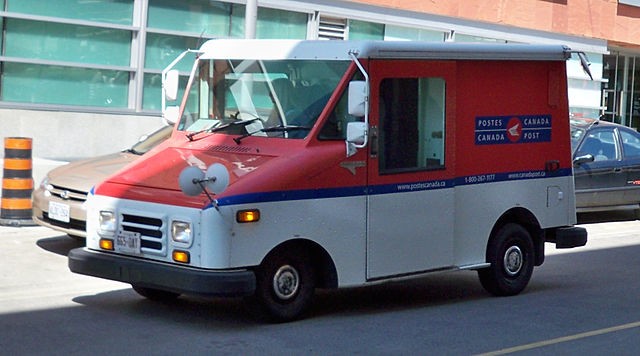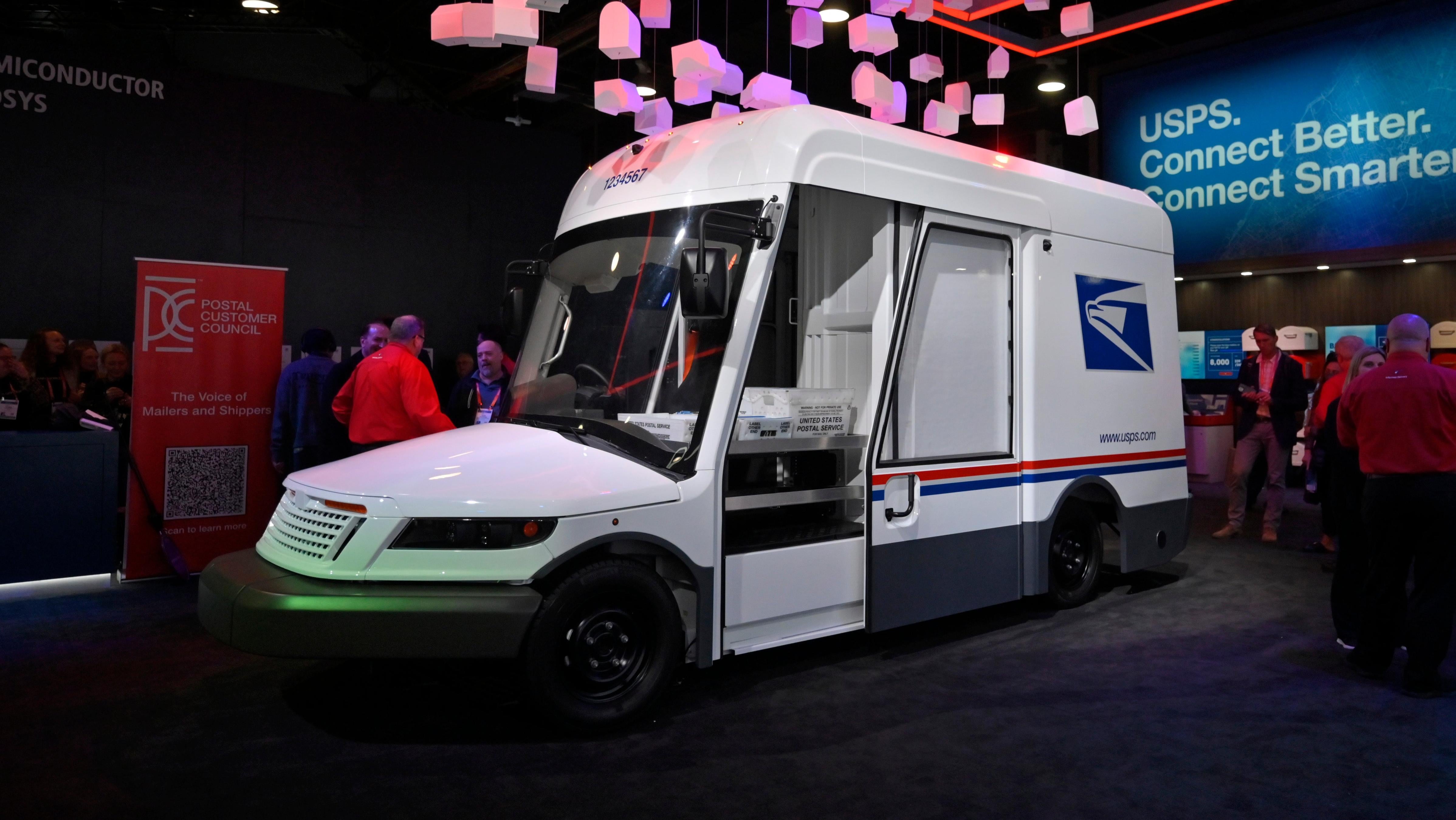Trundling their way down the street, it is doubtless you have seen a postal vehicle resembling the one shown above. In fact, by the United States Postal Service's estimates, there are still around 100,000 still on the road. So what are these odd little trucklets?
They are called the "Grumman LLV," the LLV standing for "Long Life Vehicle."
Before the 1980s, the post office would buy modified versions of civilian vehicles (usually Jeeps), with right hand drive, so the driver could also dispense mail.
The problem with this, however, was the USPS wanted a more unified fleet of vehicles, that would be more suitable for deliveries and could carry more mail. The postal service needed a vehicle that was robust and could withstand rough roads while conversely remaining relatively small in stature.
In the mid-1980s they decided to launch a design contest for a dedicated delivery vehicle that best suited their needs. In 1985, the three final designs competed in Texas on streets with potholes, stopping and starting, speeding up to merge, and other practical challenges.
Each model was required to replicate tasks that letter carriers would face on their daily routes, completing thousands of miles on test courses including those made with gravel and cobblestone in addition to asphalt.
Some of the most interesting specifics from these tests include the mandates that each vehicle must: "Drive 960 miles over potholes at 10 to 14 mph" or even more specifically, "Drive over potholes ensuring that each wheel hits a pothole 35,000 times." More details about these slightly amusing demands can be found in this excellent article here.
During testing the manufacturers engineering team was allowed only 5 unscheduled maintenance stops "to repair components expected to last the full life of the vehicle." Additionally, if a postal prototype encountered the same issue twice, they were eliminated from the competition.
The vehicles had to be tough, racking up thousands of miles, up to a ton in payload, and the accessibility for those of different heights and weights.
The winning postal vehicle was the Grumman LLV (the only prototype to successfully complete the test), produced in partnership by the defense contractor known now as Northrop Grumman and our favorite conglomerate General Motors.
The LLV is of an unusual construction sporting a GM Chevy S10 Blazer truck chassis and a rust resistant all aluminum body. Under the hood the LLV ran a Chevy 2.5 liter I4 (for most of its life), better known amongst car guys as "the Iron Duke."

The LLV was even used by the Canadian postal service, under what I think is a significantly better color scheme, but has since begun phasing them out in favor of custom Ford transit vans.
It appears the same fate will happen to their American brethren, as for the past few years USPS has been in the process of acquiring a replacement for the LLV. (Something that has taken them a little longer than they bargained for.)
Contract delays have held the postal service up since they first announced they were seeking a replacement in 2015.
In February 2021, USPS finally announced their contract with Oshkosh Defense and additionally released information about their new mail carriers. When unveiled on the internet, Oshkosh and the government were met with a less than stellar reaction...I'll allow you to make your own judgements from the photo attached below.

Personally I am rather displeased, but you can't stop progress! I guess.
The time is probably right considering the LLVs are beginning to make like Katniss Everdeen and are bursting into lovely golden flames.
(This is true, they are beginning to catch fire.)
They cannot ride of into a beautiful amber sunset in flames just yet however. The postal service and their lovely new defense contractor to be have been having just a smidgen of trouble conceiving, and the delivery date has been pushed back nine months, from September of 2023 to June of 2024.
The LLV has had a good run, before its introduction, mail was often delivered by Jeeps that lasted around just six years on average.
And just before that, even into the 1950s, mail was still delivered using horse and carriage in some major cities.
Our country has changed a great deal since the mid-1980s when the Grumman LLV first started to bang up on curbs across America, and I think its longevity and resilient engineering should be lauded, regardless of it having air conditioning or excellent safety features. It may be time to say goodbye (not quite yet, this is government work), but the LLV will not be forgotten.
Here's to hoping our favorite governmental agency's delivery vehicles have a long, smooth, climate controlled life.
(I didn't forget about the tidbit.)
TidBit:
Wedding attendee suffers embarrassment from her boyfriend: 'No more cookies for him,' said Reddit user
Fox News appears to have become a Reddit story re-poster...but don't worry they've gussied this one up by bringing in an etiquette expert for comment.


Comments
Post a Comment